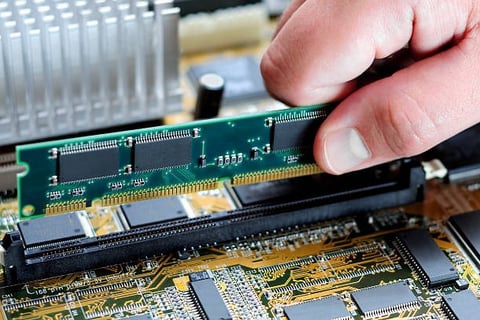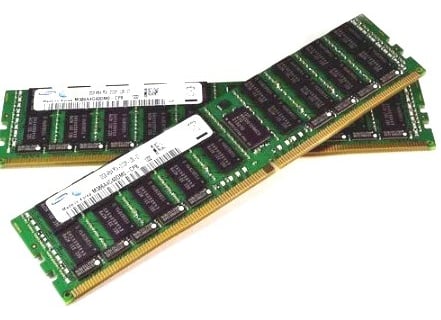There are several types of RAM, each designed for specific uses and with different performance characteristics. Here’s a breakdown of the main types:
1. DRAM (Dynamic RAM)
Description: The most common type of RAM in computers and other devices. It stores data in capacitors that need to be refreshed periodically, hence the term “dynamic.”
Use: Mostly used in desktops, laptops, and servers.
2. SRAM (Static RAM)
Description: Unlike DRAM, SRAM doesn’t need to be refreshed because it stores data in transistors. It’s faster but more expensive and less dense than DRAM.
Use: Often used in cache memory for CPUs, GPUs, and other high-speed caches.
3. SDRAM (Synchronous DRAM)
Description: Operates in sync with the CPU’s clock speed, enabling higher efficiency and speed in handling data.
Use: Common in older computers and some embedded devices.
4. DDR SDRAM (Double Data Rate SDRAM)
Description: A type of SDRAM that transfers data on both the rising and falling edges of the clock signal, effectively doubling the data transfer rate. DDR has several generations:
DDR1: The first generation, now obsolete.
DDR2: Improved speed and efficiency over DDR1.
DDR3: Faster and more efficient than DDR2, commonly found in many older computers.
DDR4: Higher speed and lower power consumption than DDR3; standard in most modern PCs.
DDR5: Latest generation with even higher data transfer rates and improved efficiency.
Use: Widely used in modern desktops, laptops, and servers.
5. GDDR (Graphics DDR)
Description: Similar to DDR SDRAM but optimized for graphics processing. Versions include GDDR2, GDDR3, GDDR5, GDDR5X, GDDR6, and GDDR6X.
Use: Primarily used in graphics cards (GPUs) for tasks that require high-speed image and video processing.
6. LPDDR (Low Power DDR)
Description: A variant of DDR RAM optimized for low power consumption, commonly seen in mobile devices. Versions include LPDDR2, LPDDR3, LPDDR4, and LPDDR5.
Use: Found in smartphones, tablets, and laptops that prioritize battery life.
7. ECC RAM (Error-Correcting Code RAM)
Description: A special type of RAM that detects and corrects memory errors, ensuring data integrity.
Use: Mainly used in servers and workstations where data accuracy and reliability are critical.
Each type of RAM has unique characteristics suited to different needs, with DDR SDRAM, especially DDR4 and DDR5, being the standard for general computing, and specialized types like GDDR and LPDDR used in graphics processing and mobile devices, respectively.




